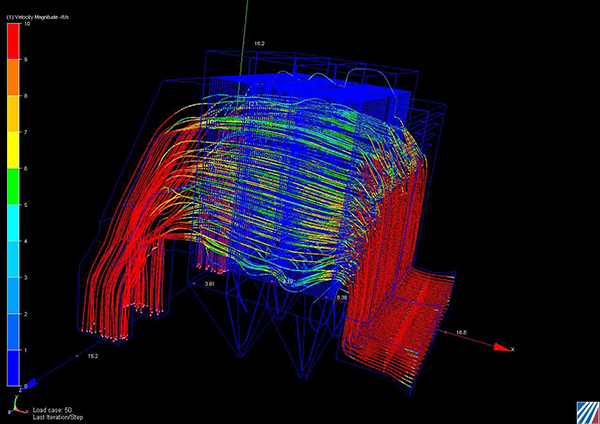Baghouse Design: Factors That Affect Fabric Filter Performance & Lifespan
In the wake of new EPA regulations, both proposed and recently enacted, many power utilities and industrial plants are considering adding new baghouses to aid with their pollution control strategy. Before choosing a vendor and moving ahead with construction it’s important to look at some important design and operational features unique to baghouses that may not be considered by your vendor or even the A&E.
From a performance standpoint, unlike with electrostatic precipitators (ESPs), collection efficiency is not the primary consideration. Baghouses are usually 99.9% efficient, unless a bag breaks or there is some other major system error.
However, from a long term operational and maintenance perspective, several other factors are paramount: long term pressure drop limit, filter bag life, compressed air usage, instrumentation and maintenance/service accessibility during rebagging, bag length with cage design, interstitial velocities during online cleaning and, finally, air-to-cloth ratio.
Air-to-cloth ratio is a good example of a key factor that may be influenced”for good or bad”by things like industry trends, regulatory pressures, or budget cuts.
In the past several years, which one could reasonably characterize as a depressed market for baghouse vendors, an unfortunate trend has emerged: manipulating air-to-cloth ratio in baghouses by building taller and taller units to accommodate extra-long bags (or forcing longer bags into existing design units).
Where once fabric filter bags generally topped out in length at around 20-26 feet, it’s becoming more and more common to see bags up to 1/3 longer than this. The problem with such designs is that they don’t take into account the mechanics of how baghouses collect particulate nor how bags are most efficiently cleaned and their core velocities.
œThe devil is in the details, says Jim Parsons, Senior Environmental Consultant at Neundorfer. œTaller bags might seem like a good idea up front to meet your specified air-to-cloth ratio, but in the long run this can create some serious cleaning and reliability issues. It pays to have someone with practical knowledge about baghouse design review your fabric filter specifications before going out for bid.
Helpful Resources
KnowledgeBase: Tutorial 3: Design Variables
KnowledgeBase: Misconceptions Overview
Our Capabilities: Asset Planning
Our Capabilities: Predictive Modeling


